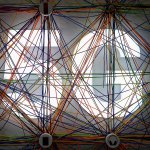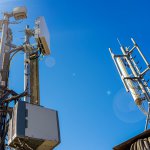EE launches (limited) 5G service in UK cities

5G is no longer just ‘hype’— after a year or so of a solid preamble, the cellular technology is officially in the wild as UK mobile carrier EE switches on its next-gen service across six cities.
In launching today (May 30), the British Telecoms subsidiary pips rival Vodafone to the post, which recently announced it would be launching its 5G service at a similar scale in July.
EE’s 5G rollout doesn’t mean it has just created six ‘smart cities’. The service is so far both limited and expensive.
Early adopters wanting immediate access will need to pay a minimum of £54 (US$68) for 10gb of data, as well as buying a compatible handset.
In the cities where it has launched— London, Cardiff, Belfast, Edinburgh, Birmingham and Manchester— the connection will be “patchy”.
Only outdoor connectivity will be available in some instances, and none at all in others, meaning customers’ smartphones would default to slower 4G.
Furthermore, following launch EE expects 5G customers to see download speeds averaging 150-200Mbps, meaning wait times for large files will still take a matter of minutes, not seconds.
That’s still faster than the 29.6Mbps that OpenSignal says EE is typically able to offer with 4G, but a universe away from the potential 20Gbps that Ofcom says 5G could be capable of.
Meanwhile, latency will fall to 20 milliseconds— an advance on the current 20-70 milliseconds available today, but a long way off the one millisecond or less that 5G is tipped to be capable of.
YOU MIGHT LIKE

How 5G is upgrading our thinking
More devices, smarter cities
While the stats might be a tad underwhelming, perhaps the main benefit of 5G is allowing mobile networks to host vastly many more connections at once.
As infrastructure is advanced rapidly in the coming years (market competition will ensure it does), this capability will allow smart city technology to finally enter the stage.
Current 4G technology can support around 60,000 devices per square kilometre, but 5G could support more than one million connections in the same area.
In order to reap the benefits, thousands of antennas and ‘small cells’ will need to be built or installed across cities, in coordination between network operators and local authorities.
This would provide the infrastructure for a wide introduction of connected technology and data capturing sensors, that will allow authorities and enterprises to gain insights into behavior and create ‘smart services’ as a result.
While 4G has given us the potential to control machines, 5G will allow IoT-enabled machines to control and communicate with one another instantly.
A driver could be notified of an available parking space late at night, for example. This space could be automatically lit by a streetlight for their arrival, which then turns off to save energy again until morning.
There are countless other use cases in the management of traffic, waste, safety, security and engaging citizens. For businesses, the potential of 5G will be limited only by creativity and, of course, the value it creates to the customer.
Future 5G networks will also be fundamental for the safe operation of autonomous vehicles, which will use the technology to communicate with their surroundings and act on information more or less instantly.
So, EE’s launch of 5G shouldn’t be played down. It marks another step towards that future potential, but there is still a long way to go and many challenges to overcome before 5G will show some significant impact.









